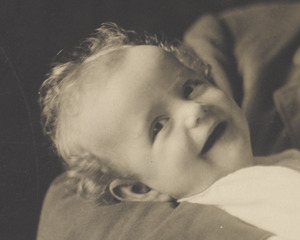Kermit Roosevelt Jr. facts for kids
Quick facts for kids Kermit Roosevelt Jr. |
|
|---|---|
| Allegiance | United States |
| Service | Office of Strategic Services Central Intelligence Agency |
| Operation(s) | TPAJAX |
|
|
|
| Born | February 16, 1916 Buenos Aires, Argentina |
| Died | June 8, 2000 (aged 84) Cockeysville, Maryland, U.S. |
| Parents | Kermit Roosevelt (father) |
| Spouse |
Mary Lowe Gaddis
(m. 1937) |
| Children | 4; including Mark |
| Alma mater | Harvard University |
Kermit Roosevelt Jr. (born February 16, 1916 – died June 8, 2000) was an American spy and intelligence officer. He worked for the Office of Strategic Services (OSS) during and after World War II. He was also the grandson of Theodore Roosevelt, who was the 26th President of the United States. Later, Kermit Roosevelt Jr. played a big part in a secret operation by the CIA to change the government in Iran in 1953.
Contents
Early Life and Family

Kermit Roosevelt Jr. was born in Buenos Aires, Argentina, in 1916. His family called him "Kim." His father was Kermit Roosevelt Sr., who was the son of U.S. President Theodore Roosevelt. His mother was Belle Wyatt Roosevelt.
At the time, his father worked for a shipping company and a bank in Buenos Aires. The Roosevelt family later moved back to the United States. Kim grew up in Oyster Bay, New York. This area was close to Sagamore Hill, the family home of the Roosevelts on Long Island.
Kim went to Groton School when he was younger. He then studied at Harvard University and graduated in 1937. After college, Roosevelt taught history at Caltech.
His Work as an Intelligence Officer
Joining the OSS
When World War II began, Kermit Roosevelt Jr. joined the Office of Strategic Services (OSS). This organization was a very early version of what would later become the CIA. In 1943, when Kim was 27, his father, Kermit Sr., passed away while serving in Alaska. Roosevelt Jr. continued to work for the OSS after the war ended. He helped write the history of the organization.
After the War
After the war, Roosevelt worked with groups that focused on the Middle East. He was part of the Institute of Arab American Affairs. In 1951, he helped start the American Friends of the Middle East (AFME). This group was often critical of how the U.S. supported Israel. Historians have said that the AFME received secret funding from the CIA and from an oil company called ARAMCO.
Working for the CIA
In 1950, Roosevelt was asked to join the CIA. He was sent to Egypt. There, he helped encourage a group called the Free Officers Movement to carry out a coup d'état in 1952. A coup d'état is when a government is suddenly overthrown, usually by military force. Roosevelt then became close with the new leader of Egypt, Gamal Abdel Nasser.
Roosevelt became a very important intelligence officer in the Middle East. He believed that the U.S. should support Arab countries.
Operation Ajax in Iran
Roosevelt played a key role in a secret CIA operation called Operation Ajax. This operation aimed to overthrow Mohammad Mosaddegh, the leader of Iran, in 1953. Roosevelt was in charge of planning the operation on the ground. He helped convince the Shah (the king of Iran) to sign orders dismissing Mosaddegh.
He also built a network of people in Iran who supported the U.S. and were willing to help with the coup. These actions helped weaken Mosaddegh's power. The first attempt to overthrow Mosaddegh failed because he found out about it. Even though the CIA told Roosevelt to leave Iran, he stayed and planned a second attempt. He spread false stories that Mosaddegh was trying to take over the throne.
The second coup was successful. This operation became a model for how the U.S. tried to influence other countries during the Cold War. In 1954, President Dwight D. Eisenhower secretly gave Roosevelt the National Security Medal for his work. In 2014, many secret documents about the CIA's role in this operation were made public.
Twenty-six years after the Iran coup, Roosevelt wrote a book about it called Countercoup. He claimed he entered Iran secretly in 1953 using a fake name. However, when he submitted his book to the CIA for approval, they asked for many changes. A CIA reviewer said the book became "essentially a work of fiction" after the changes. This allowed the book to be published. Some historians disagree with Roosevelt's account, saying he exaggerated his own role and America's importance in the coup.
After his work in Iran, Roosevelt became an assistant director in a CIA department called the Directorate of Plans.
Guatemala and Beyond
The CIA asked Roosevelt to lead another coup in Guatemala in 1954. This operation aimed to remove the government of Jacobo Árbenz. However, Roosevelt refused. He believed the Iran coup worked because many Iranians supported it, but he didn't think the same was true in Guatemala. He later said that the change in Guatemala happened mostly because of rumors of a U.S. invasion, not secret operations.
Roosevelt left the CIA in 1958. He then worked for American oil and defense companies. He often visited Iran and met with former agents and the Shah.
Personal Life
Kermit Roosevelt Jr. married Mary Lowe "Polly" Gaddis in 1937. They had four children: Kermit III, Jonathan, Mark, and Anne.
Death
Kermit Roosevelt Jr. died in 2000 in Cockeysville, Maryland. He was 84 years old. He was survived by his wife, children, a brother, and seven grandchildren.
See also
- Theodore Roosevelt (grandfather)
- Kermit Roosevelt (father)
- Kermit Roosevelt III (grandson)


